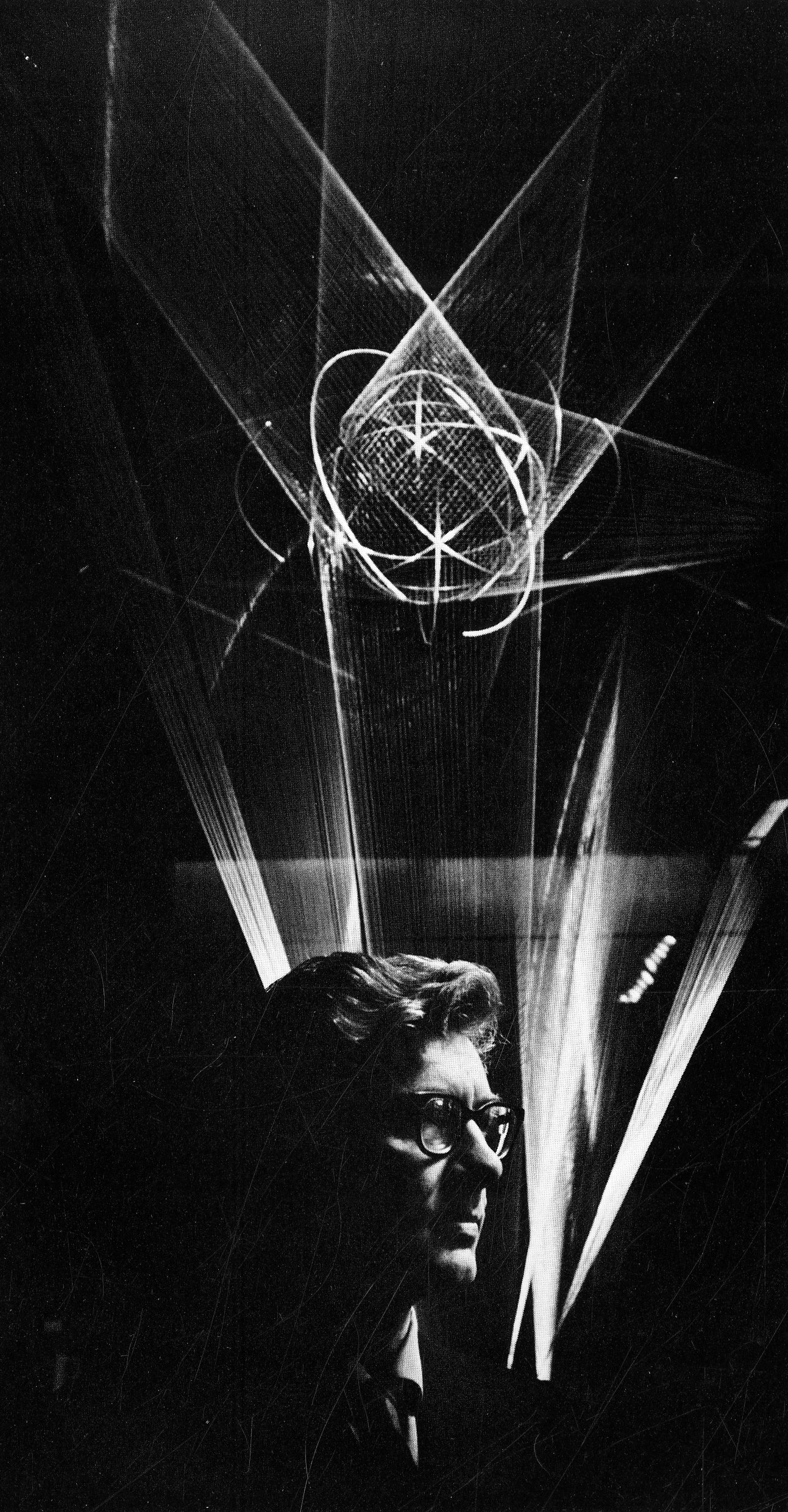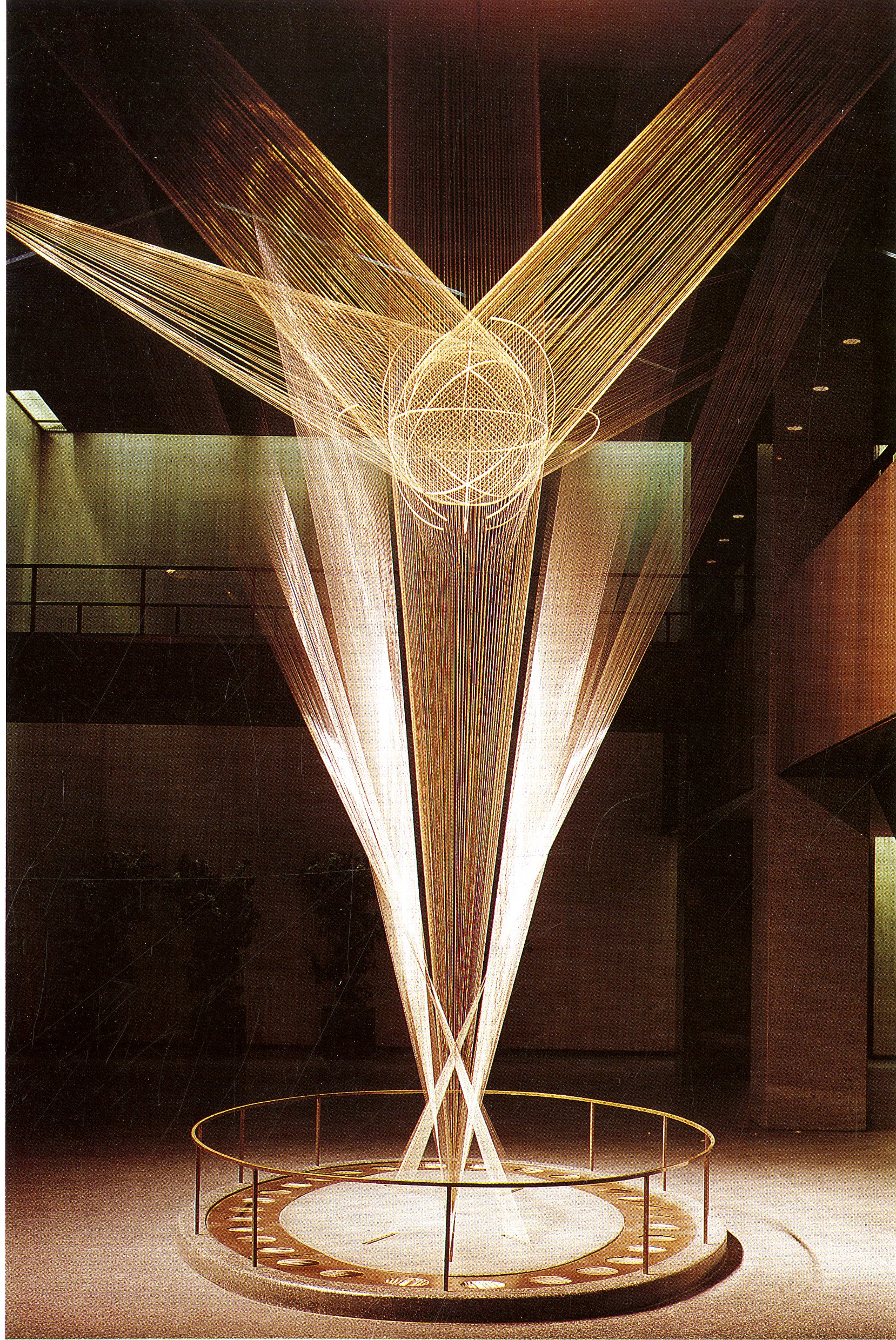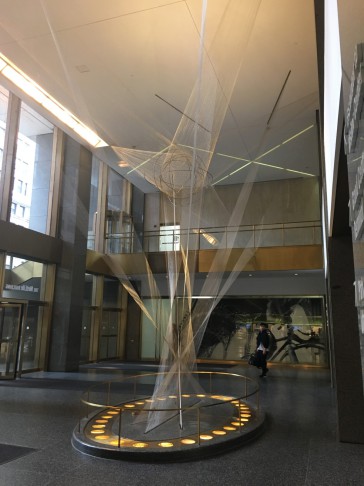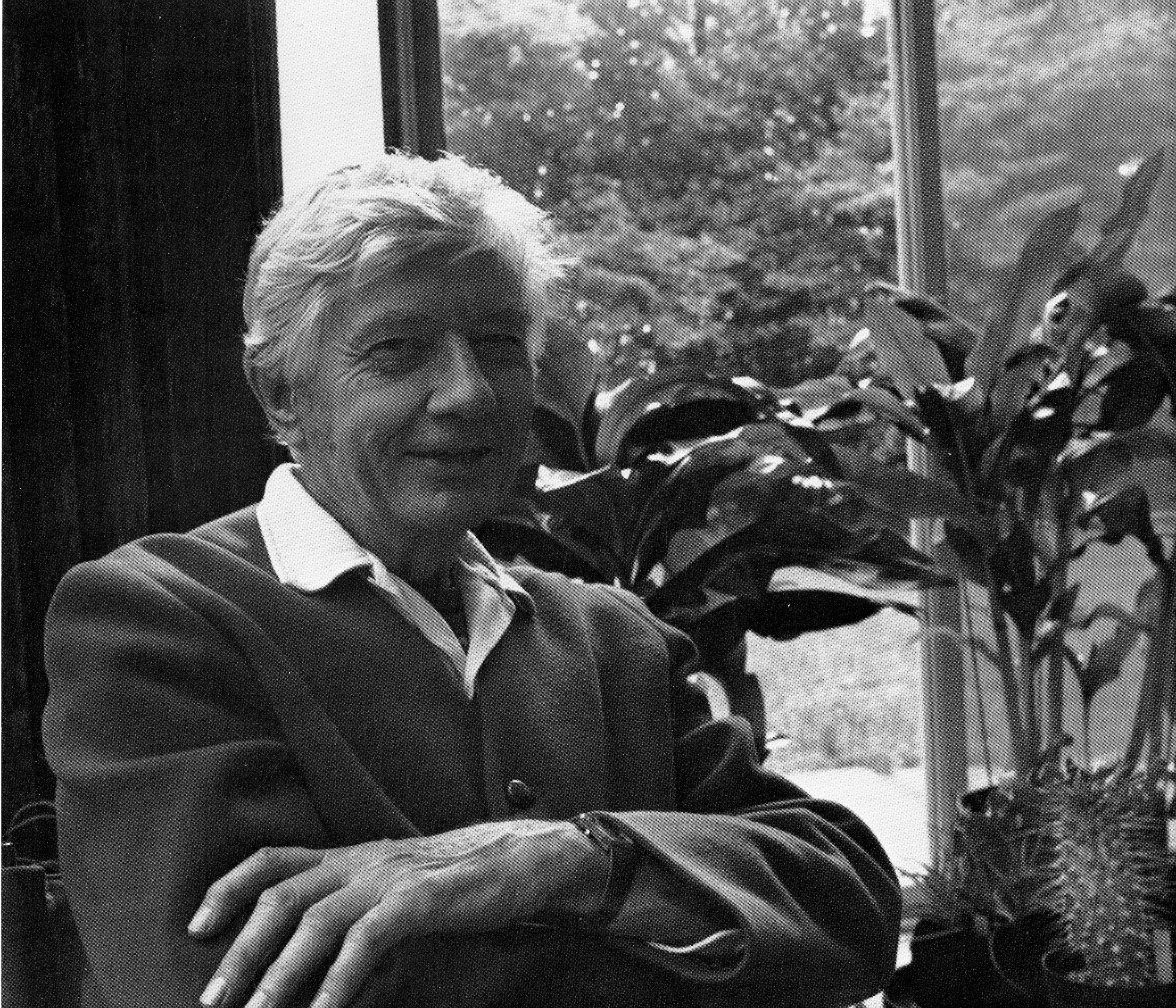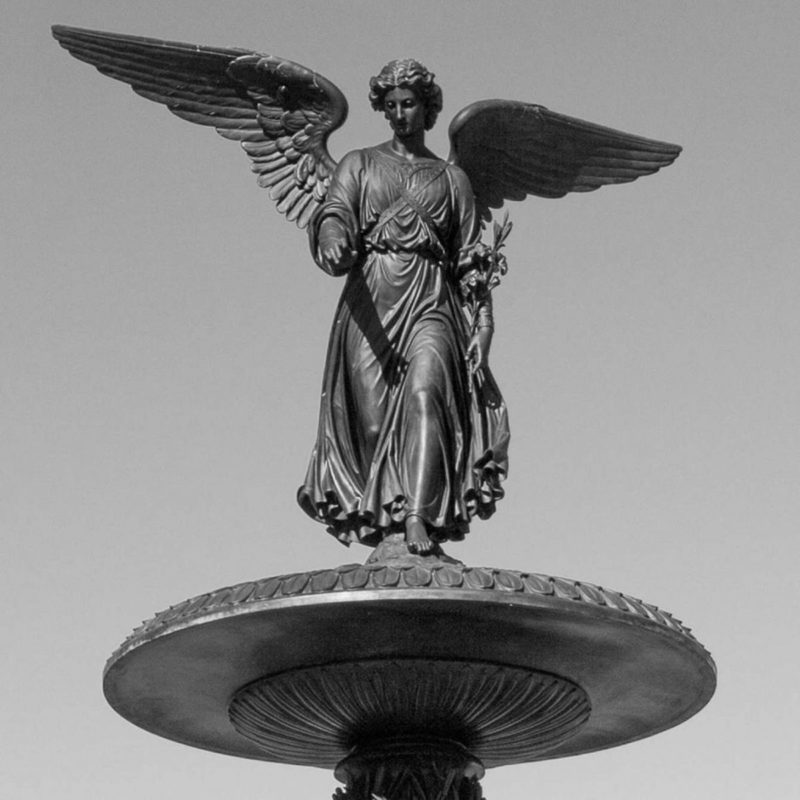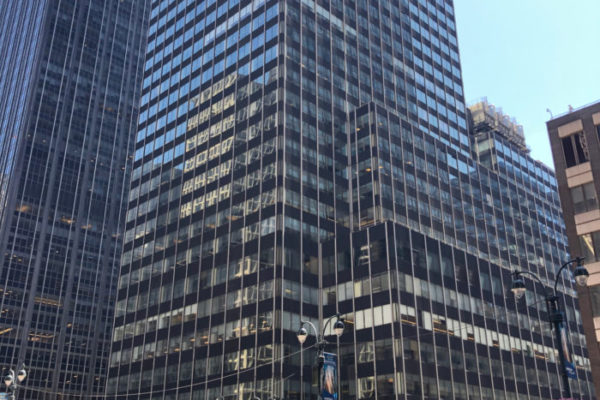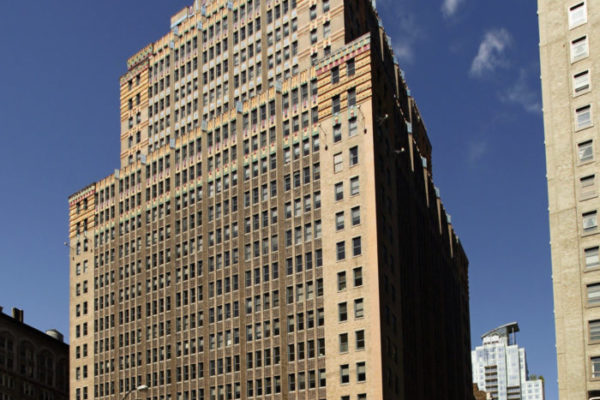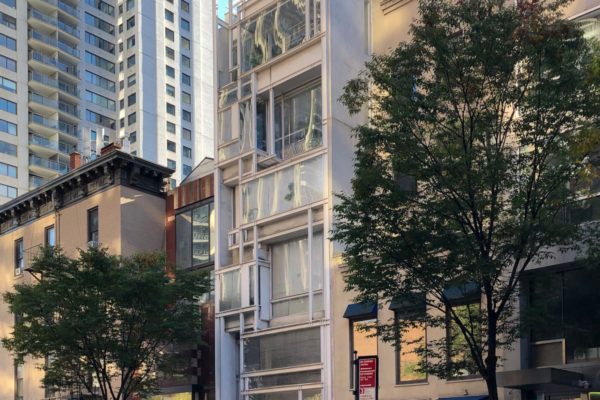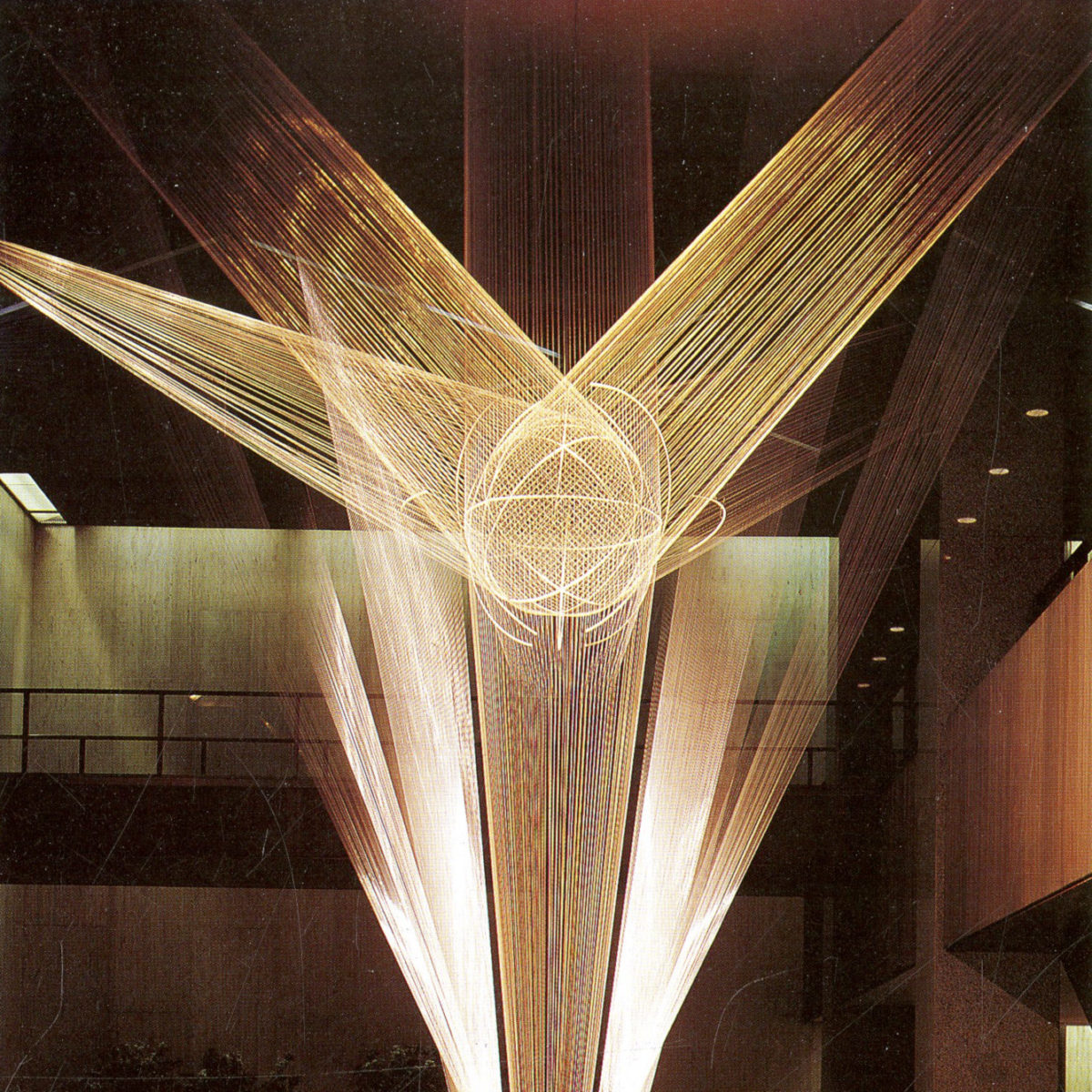
Richard Lippold & “Flight” at the Pan Am (now Met Life) Building
overview
Richard Lippold, the preeminent mid-20th-century creator of site-specific indoor sculpture in America, designed three major works for spaces in New York City.
Among his finest installations is “Flight,” located in the Vanderbilt Avenue lobby of the former Pan Am (now Met Life) Building.
On the Map
VIEW The Full MapHistory
Richard Lippold (1915-2002) was one of the busiest and most highly-respected sculptors of the late 1950s and 1960s, working with metal rods, bars, and wires that reformulated space. He was, according to art critic John Canaday, “an artist of phenomenal elegance.” He specialized in working with architects in the creation of large installations designed as site-specific public art works, three of which were commissioned for prominent interiors in New York City. The idea of an artist creating work for architect-designed spaces was extremely controversial when Lippold was creating his major pieces. Critic Ada Louise Huxtable wrote that “there is no subject that has been the source of more disagreement, or more prolonged and bitter discord.” This may explain why Lippold’s work is not more celebrated today, despite the fact that in 1963 Calvin Tompkins wrote that Lippold was “by all odds the busiest artist now working predominantly in collaboration with architects.”
Lippold was born in Milwaukee, Wisconsin, and studied industrial design at the Chicago Art Institute. After becoming disillusioned with industrial design, Lippold began making sculpture, creating complex pieces from metal and gold or silver wire. In 1944, Lippold and his wife moved to New York City, first living on West 87th Street and later in a loft on West Broadway, before moving to Locust Valley, Long Island. In 1948, Lippold met avant-garde artist Ray Johnson:
Richard Lippold and [Ray] Johnson quickly began an affair, which then became a relationship,and they continued to see each other until 1974.
In 1974, Lippold fell in love with Augusto Morselli, with whom he lived for the rest of his life (he and his wife never divorced). Although long term, his same-sex relationships were erased in his 2002 obituary, which states that he was “survived by his wife” and three children.
In 1957, architect Philip Johnson asked Lippold to design a sculpture for the ceiling of the bar room in the Four Seasons Restaurant. For the room, Lippold created an elegant installation of 1,500 bronze rods suspended at uneven lengths in bundles, one large group over the bar, creating an intimate space, and a second group over tables on a mezzanine. As Johnson noted, Lippold’s sculpture was “so tied up with its space that you couldn’t pull it out of there. If you did, both the sculpture and the architecture would suffer.”
In 1960, Lippold was commissioned to design a major installation for the Vanderbilt Avenue lobby of Walter Gropius and Pietro Belluschi’s new Pan Am (now the Met Life) Building. Called “Flight,” the three-story work consists of shafts of thin wire that emanate from an oval base and surround a suspended wire globe, the entire group lit from below by lighting designer Abe Feder. The New York Times noted that “the pattern of lighting allows the work to be viewed in greater depth.” Lippold described the work in 1961 before it was installed:
The forms are derived from the performances and shapes of modern aircraft, except for a sphere of the world in the center. . . . The central sphere is further developed by fragments of arcs suspended . . . like parts of the world transported by means of swift air travel.
Visitors and office workers can walk past the sculpture located in the center of the lobby, but can also view it from an escalator or from a balcony. Gropius suggested that the work both embraced and penetrated the space, “giving it significance and serenity,” and that “space and sculpture became an intrinsic, inseparable artistic whole.” [Note: “Flight” is currently not visible, as the lobby is being rehabilitated. It will be restored to view later in 2020.]
Lippold’s most important work in New York, considered by many to be his masterpiece, was “Orpheus and Apollo” created for the Promenade of Philharmonic (now David Geffen) Hall at Lincoln Center. In 2014, the sculpture was removed and placed in storage. In 2023, the sculpture was rehung, in somewhat altered fashion, in the atrium of the business and conference center at LaGuardia Airport.
Entry by Andrew S. Dolkart, project director (March 2020; revised November 2023).
NOTE: Names above in bold indicate LGBT people.
Building Information
- Architect or Builder: Walter Gropius
- Year Built: 1958-63
Sources
Ada Louise Huxtable, “Art in Architecture 1959,” Craft Horizons, 19 (January 1959), 10-15. [source of Huxtable quote]
Calvin Tompkins, “Profiles: A Thing Among Things,” The New Yorker, March 30, 1963, 47-107. [source of Johnson and Gropius quotes]
Curtis L. Carter, Jack W. Burnham, and Edward Lucie-Smith, Richard Lippold Sculpture (Milwaukee: Patrick and Beatrice Haggerty Museum of Art, Marquette University, 1990).
David L. Shirey, “Space Man,” Newsweek, January 29, 1968, 82-83. [source of Philip Johnson quote]
John Canaday, “190-Foot Sculpture by Lippold to Hang in New Philharmonic,” The New York Times, March 15, 1962.
John Canaday, “An Impossible Exhibition,” The New York Times, February 11, 1962.
Ken Johnson, “Richard Lippold, Sculptor of Metal Abstraction, Dies at 87,” The New York Times, August 30, 2002.
Marin R. Sullivan, “Synergizing Space: Sculpture, Architecture and Richard Lippold at Lincoln Center,” American Art 33 (Summer 2019).
Mary Mann, “(Untitled): The Life and Work of the Artist Ray Johnson,” The Believer, 112 (July 1, 2015), bit.ly/2V2b97v. [source of Mann pull quote]
Meredith L. Clausen, The Pan Am Building and the Shattering of the Modernist Dream (Cambridge: MIT Press, 2005).
“Pan Am Building to Have Sculpture,” The New York Times, September 3, 1961. [source of NYT pull quote]
“Pan Am Lobby Gets Look of Art Gallery,” The New York Times, July 7, 1963. [source of New York Times quote]
Phyllis Lambert, Building Seagram (New Haven: Yale University Press, 2013).
Richard Lippold 1952-1962 (New York: Willard Gallery, 1962).
Richard Lippold to 1967 (New York: Willard Gallery, 1968).
Stuart Preston, “Art: ‘Orpheus and Apollo’,” The New York Times, December 21, 1962.
Do you have more information about this site?
This project is enriched by your participation! Do you have your own images of this site? Or a story to share? Would you like to suggest a different historic site?

